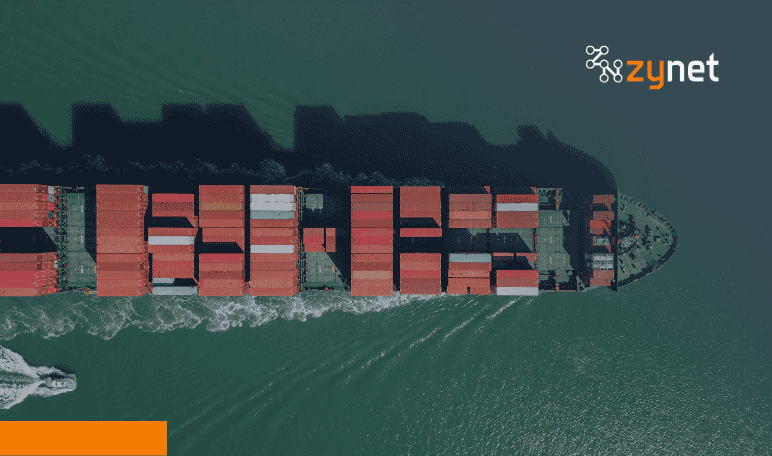Operational resilience has become the defining benchmark for modern enterprises. It is no longer enough to have strong perimeter controls or reactive IT support. Organisations must demonstrate they can prevent, detect, respond, and recover continuously.
For many mid-tier businesses, this is only possible with managed cyber security. This model combines 24x7 monitoring, proactive defence, and expert governance to keep operations running securely even under pressure.
Understanding the Link Between Managed Cyber Security and Resilience
Operational resilience is the ability of an organisation to continue delivering services despite disruption. It is measured not only by uptime but also by how quickly a business can recover from an incident without reputational or financial damage.
Managed cyber security supports this resilience by closing the gap between detection and response. It turns fragmented security tools into a coordinated defence capability, guided by expert analysts who operate continuously across identity, endpoints, cloud, and networks.
In practical terms, it means that when an attack begins, someone is watching. Alerts are triaged in minutes, containment is initiated immediately, and recovery begins without waiting for escalation.
For financial services, manufacturing, transport, and government sectors where interruptions directly affect revenue and compliance, that continuity is critical.
The Case for Continuous Detection and Response
Many organisations still rely on periodic scanning, signature-based tools, or internal staff who monitor security as part of a wider IT role. The result is delayed detection, slow response, and increased exposure.
Managed Cyber Security changes that equation. Through a 24x7 Security Operations Centre (SOC), threats are monitored in real time. Detection rules are tuned to the organisation’s environment, and anomalies are escalated through defined playbooks.
This continuous oversight transforms incident management from reactive firefighting into proactive control. Instead of discovering breaches weeks after they occur, businesses can now measure Mean Time to Detect (MTTD) and Mean Time to Respond (MTTR) in minutes or hours.Key Outcomes of Continuous Monitoring
-
Faster containment: Automated workflows isolate compromised accounts or devices before lateral movement occurs.
-
Improved visibility: Logs from cloud, endpoint, and identity platforms are unified into a single risk picture.
-
Reduced downtime: Early detection stops incidents before they affect production systems or customer channels.
-
Regulatory confidence: 24x7 monitoring provides measurable evidence for audit and insurance reviews.
Safeguarding Data in an Expanding Threat Landscape
Digital transformation has blurred the lines between corporate networks and cloud ecosystems. Data now moves freely between devices, SaaS platforms, and external partners, multiplying potential entry points.
Managed cyber security defends this landscape by extending protection beyond the perimeter. Using advanced telemetry, it monitors user behaviour, email threats, and endpoint anomalies while correlating data to identify suspicious activity across all environments.
For example, when credentials are compromised, behavioural analytics detect irregular sign-ins or impossible travel events. In response, access is blocked and the SOC notifies the internal IT team for validation.
These integrated safeguards reduce the risk of data loss, ransomware, and privilege misuse, three of the most common causes of extended downtime and regulatory exposure.
The Compliance Advantage
Regulated sectors such as financial services and government must provide evidence that cyber controls operate effectively in practice. Regulators and insurers increasingly require documentation that shows how risks are managed, monitored, and mitigated.
Managed cyber security services generate that evidence automatically. Every alert, action, and resolution is recorded, timestamped, and traceable. Executive reports map performance metrics directly to standards such as NIST CSF, ISO 27001, and the ACSC Essential Eight.
This structured reporting provides three key benefits:
-
Assurance: Boards and regulators can see that policies translate into measurable action.
-
Audit readiness: Evidence of monitoring, response, and improvement is always available.
-
Insurance leverage: Many insurers now require proof of active detection and response before renewing cyber cover.
In short, compliance becomes a by-product of doing security well rather than a separate, resource-heavy exercise.
Turning Security Data into Business Intelligence
Managed security operations generate vast amounts of data. When analysed correctly, this data provides insights far beyond threat detection.
Executives can track:
-
Trends in attack attempts and their sources
-
The effectiveness of current controls
-
Time to contain and recover across different incident types
-
Improvement in user behaviour and policy adherence
These insights drive better budgeting, governance, and investment decisions. They also demonstrate progress over time, a critical factor when presenting cyber performance to boards, investors, or auditors.
By connecting technical outcomes with business impact, managed cyber security elevates security from an operational function to a strategic enabler of resilience.
How Managed Cyber Security Improves Collaboration Between IT and Risk Teams
Many mid-tier organisations still separate IT operations and cyber risk management. This creates duplication, blind spots, and slower response times when incidents occur.
A managed security model bridges these teams through shared visibility and joint accountability. The SOC coordinates with internal IT to validate incidents, apply patches, or isolate systems, while risk and compliance teams receive real-time reporting on exposure trends.
This integration ensures that both technical and governance perspectives are aligned, essential for resilience in sectors where downtime or data loss has regulatory implications.
The result is a unified resilience strategy rather than parallel streams of activity.
Managed Cyber Security in Action: A Practical Example
Consider a mid-sized financial services organisation operating across multiple offices and cloud platforms. Overnight, one of its staff falls for a phishing email, providing credentials to a malicious site.
Within seconds, the managed SOC detects abnormal login attempts from an overseas IP. The user’s account is suspended automatically, and the internal IT team receives an immediate alert. The incident is contained before any financial systems are accessed.
By morning, the executive summary is ready, outlining what happened, how it was contained, and which improvements are planned. No customer data was lost, and the business continues operations without disruption.
This scenario illustrates the tangible difference between having security tools and having a managed security capability.
Aligning Managed Security with Broader Resilience Strategy
Operational resilience is not built on technology alone. It depends on leadership alignment, governance, and a culture that prioritises readiness.
Managed cyber security supports this through structured frameworks that map to resilience principles:
-
Identify: Continuous risk assessments aligned to NIST and Essential Eight.
-
Protect: Layered defences across identity, endpoint, and network.
-
Detect: Real-time monitoring and analytics.
-
Respond: Documented playbooks and incident containment workflows.
-
Recover: Tested recovery procedures and backup verification.
This lifecycle approach ensures every aspect of resilience, from prevention to restoration, is covered by measurable controls and accountable owners.
Choosing the Right Managed Cyber Security Partner
Selecting a provider is not only about technology. It is about trust, transparency, and alignment with your business objectives.
When assessing potential partners, senior executives should evaluate:
-
Experience and credentials: Certifications such as CISSP and proven delivery across regulated industries.
-
Framework alignment: Use of recognised standards like NIST and ISO 27001.
-
Reporting quality: Clarity of metrics, executive dashboards, and board-ready summaries.
-
Response speed: Demonstrated ability to contain and recover from incidents quickly.
-
Cultural fit: A provider that communicates clearly and integrates seamlessly with internal teams.
Zynet’s approach is built on these principles. With more than two decades of experience and 24x7 managed coverage, the focus remains on helping organisations stay operational, compliant, and confident.
Bringing It All Together
In an era where cyber incidents can halt operations within minutes, managed cyber security is not an optional layer. It is the core of operational resilience.
Continuous monitoring, rapid response, and standards-aligned governance turn uncertainty into control. Instead of reacting to disruption, businesses can maintain continuity, protect reputation, and demonstrate to customers, regulators, and insurers that resilience is built into every process.
For mid-tier enterprises that balance agility with accountability, managed cyber security delivers both. It provides assurance that even when threats evolve, your operations stay secure, available, and resilient.
Frequently Asked Questions
About Author
CISSP certified leader with 25 plus years of experience turning risk into action. Aligns programs to ISO 27001, NIST CSF and the ASD Essential Eight, and leads 24x7 security operations and incident response from tabletop to recovery. Expertise in Microsoft 365 and Azure AD security, identity and email protection, and cloud posture on Azure, AWS and Google Cloud, with board level reporting that shows progress.






